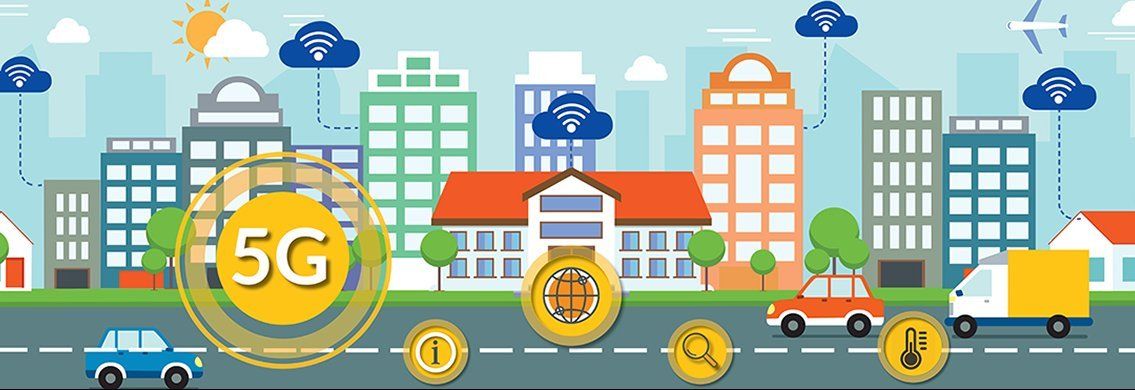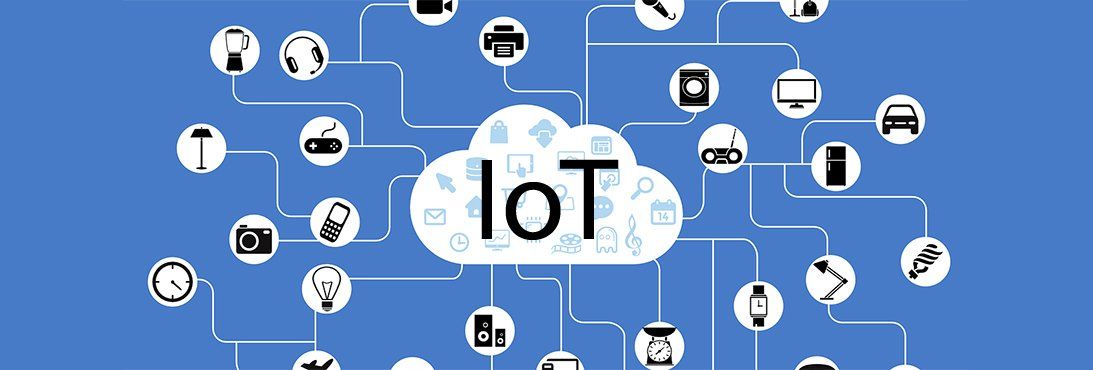5G for IOT?
Date: July 29, 2020
5G Technology Today:
The 5G technology that has been launched in New Zealand already is a great first step. One of the immediate benefits of this technology (over existing 4G technology) is a lower latency (or ‘delay') connection. Less delay means websites will be snappier and video calls will feel more 'lifelike’. More importantly, low latency connections will unlock new disruptive technologies - such as real-time navigation of autonomous vehicles; ultra-realistic online VR gaming/simulations; and many more yet-to-be-developed ideas.
Initially, one of the biggest applications for 5G in New Zealand is 'fixed wireless' according to Vodafone's technology director, Tony Baird. "... the main investment case for 5G is fixed-wireless and getting ourselves ready to do a lot more wireless [internet] to the home and wireless to the business," - Tony Baird.
The 5G networks in New Zealand will first operate in the 3.5Ghz band. Spectrum within the 3.5GHz band is limited to existing rights holders and temporary licenses but the entire band will go up for auction in 2022.
5G can also operate in mm-wave bands (>10GHz). Mm-wave 5G can provide ultrafast short-range connections suitable for use in dense city areas. The government body who manages the spectrum, Radio Spectrum Management (RSM), say that mm-wave bands will play an important role in providing capacity for 5G networks. However, they are delaying the allocation of mm-wave bands until there is more certainty in which bands will become mainstream worldwide. It is likely New Zealand consumers won't see a commercial mm-wave 5G network for the medium term (3+ years).
For the first few years, 5G will likely just add speed and capacity to existing 4G networks, which perhaps isn’t tremendously exciting. Thankfully, 5G has been architected as an evolutionary technology and new, more exciting, features will be added as the technology matures. Read on …
Future 5G Technology for IoT:
IoT or Internet-of-Things devices generally have different needs to those of smartphones. 5G could supply them with massively fast speeds but this also requires significant battery depleting power. This is acceptable for smartphones as their batteries only really need to last for a day or two on a charge. But battery-powered IoT devices want to last many months or even several years! During this time they’re mostly asleep and only wake up occasionally to spit out a little bit of data.
At the present time, 5G can’t really support these kinds of low-power/long-life devices, but the future looks promising.
3GPP is the group who are defining the standards from which our NZ 5G networks are being built. ‘Release 15’ is the first and only 5G standard document which is ‘Frozen' and ready for deployment. Future 5G releases, 16 and 17, are available to view but might still be revised/tweaked. It’s these two documents which we can use to peer into the future of 5G. Refer to figure 1 below for the expected timeline of these standards.
Figure 1: 3GPP RAN Milestones1.
The future 5G feature which excites us the most is the likely introduction of support for Massive Machine-Type Communications (mMTC) from low-power and low-complexity devices (I.E. Battery sensors and wearables) in Release 17. This feature will enable the following types of devices to be implemented:
- Industrial wireless sensors with low latency (5-10ms) and medium data rate (<2 Mbps)
- Medium to high data rate (2-25 Mbps) video transmission
- High data-rate wearables (5-50 Mbps) with long battery life (1-2 weeks)
It’s important to note that the purpose of 5G mMTC support is not to replace the likes of NZ’s existing LTE-CatM1, LoRaWAN, and NB-IoT networks. These networks are meant for super-low-power devices where the latency and data-rate of their communications is not critical. 5G Release 17 (mMTC) is aimed to fill-the-gap for devices which require:
- Lower device complexity and reduced energy consumption compared what can be provided by 5G Release’s 15/16; AND
- Have higher requirements in terms of data rates and latency compared to what can be provided with LTE-CATM1, LoRaWAN, and NB-IoT protocols.
Conclusion
The first release of 5G is here today but it’s not terribly interesting from an IOT perspective. However, the future of 5G is something we are excited about.
Release 17 is not scheduled to be frozen until at least early 2022 so it will still be a while yet before it is implemented in New Zealand. Nevertheless, Beta Solutions will be prepared and waiting so that we might best support our client’s future innovations.
If you have an idea, or need advice regarding hardware or firmware design techniques for low power wireless devices or to discuss 5G - feel free to get in touch with the team at Beta Solutions!
References
- Figure 1: 3GPP RAN milestones. Retrieved from
https://www.3gpp.org/release-17
- https://www.ericsson.com/en/reports-and-papers/ericsson-technology-review/articles/5g-nr-evolution
- https://www.5gamericas.org/wp-content/uploads/2020/01/5G-Evolution-3GPP-R16-R17-FINAL.pdf
- https://www.3gpp.org/specifications/67-releases
- Banner image vectors are retrieved from /
Vectors by Vecteezy
- IoT image by jeferrb from Pixabay
- Final image retrieved from https://pxhere.com/en/photo/1575607





